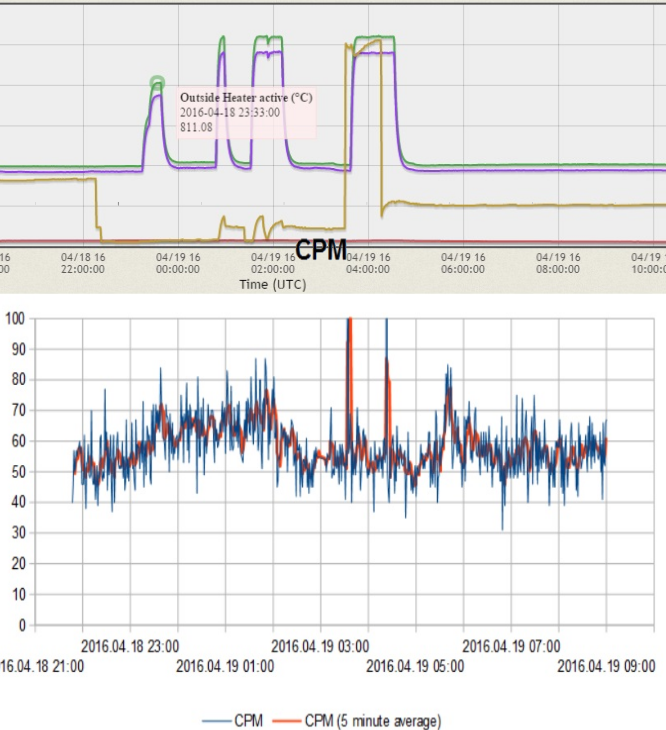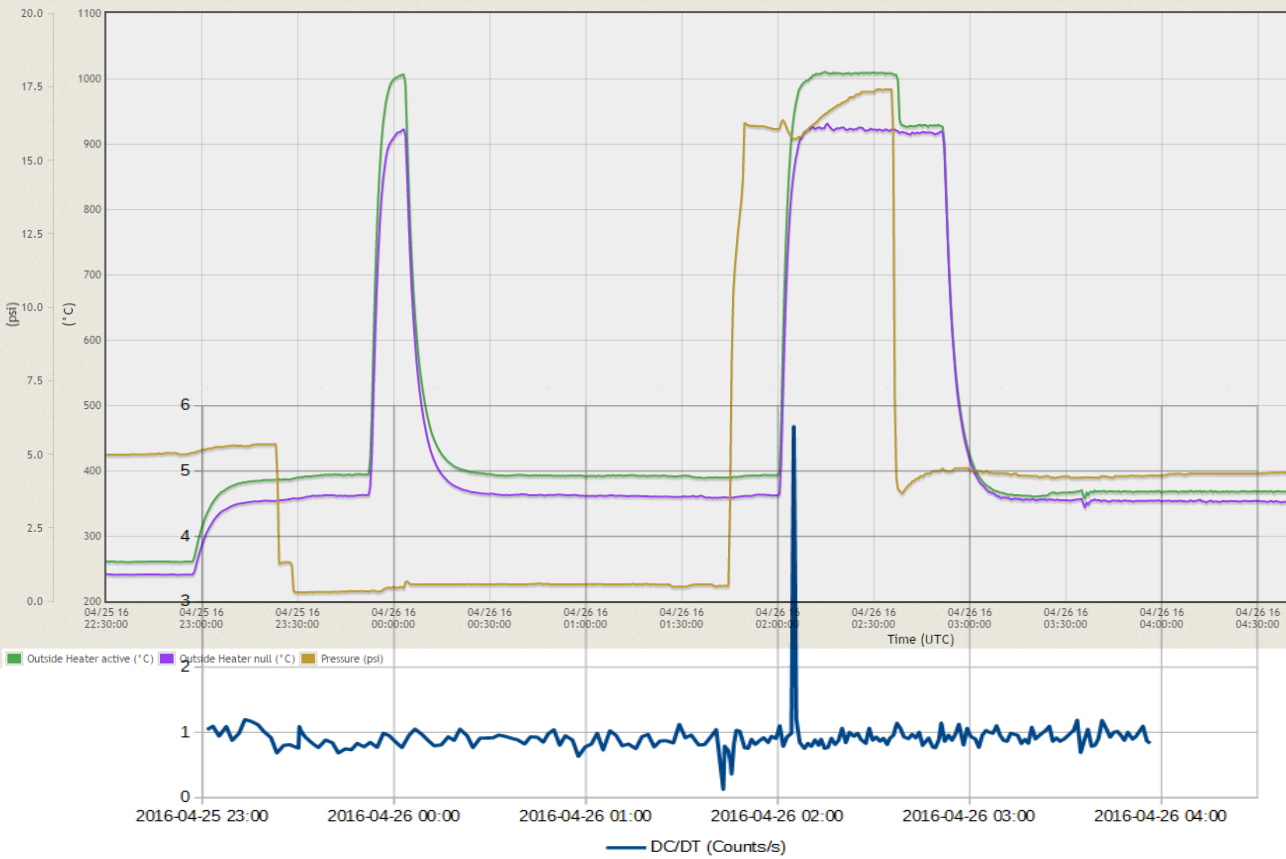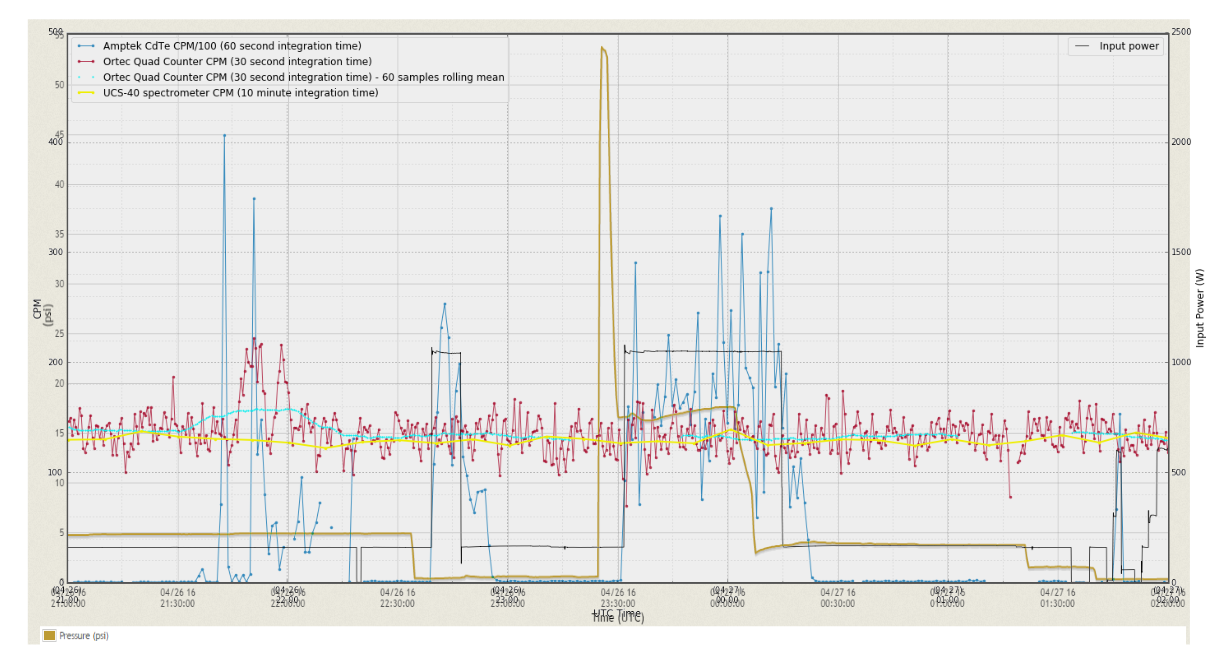@BobHiggins
RFI sensitivity as a source of the signal was only my speculation after realizing the similarity of the spectral distribution (disregarding the actual range) with that of GS5.2, given that there don't seem to be issues when a variac is used. I also recalled that a power spike seemingly occurred during GS5.2 in the timeframe where "trace #7" likely also occurred (see the arrow; I remember that other people did point that out at the time): http://i.imgur.com/zfDT7IA.png
The experiment I wanted AlanG and JustaGuy to perform with GS5.3 was actually originally intended to verify:
1) The reproducibility of a radiation count spike from the same CdTe detector when hydrogen is pumped or vacuumed out of the cell, which was caught earlier as it happened by an other user;


2) The behavior of the cell when a relatively deep vacuum is applied after hydrogen is pumped while the cell is hot - similarly to how @me356 seemed to be doing from some of the data he recently posted. This actually resulted in an odd (apparent?) pressure/vacuum level anomaly which AlanG reported here on LENR-Forum a couple days ago.
This issue/signal I linked in the graph of my previous comment actually appeared a bit before the actual experiment began, when the detector(s) was put closer to the GS5.3 reactor tube. It seems to vary in character depending on the power applied (and I guess, distance, but I wasn't there to check in detail). I have plotted other spectra from that experiment section on this page. The data I used for these is available in this shared folder. These files were saved at regular interval with a (sort of) macro script I made for the Amptek DppMCA program, which doesn't natively allow this (only manual saving).
Here's an overview of that experiment section mixing pressure data from Hugnet on top of an image showing the total radiation count rate from the Amptek X-ray probe and other detectors. As data from Hugnet cannot be properly downloaded I had to superimpose it on another plot with an image editor. Amptek CdTe radiation counts have been scaled down by a factor of 100 here. The detector was brought closer to the reactor at about 21:30 (UTC) and power was switched to a variac at about 1:55:

(EDIT: from this chart it looks like either the Amptec CdTe probe or the Ortec Quad Counter have an incorrectly setup internal time)
